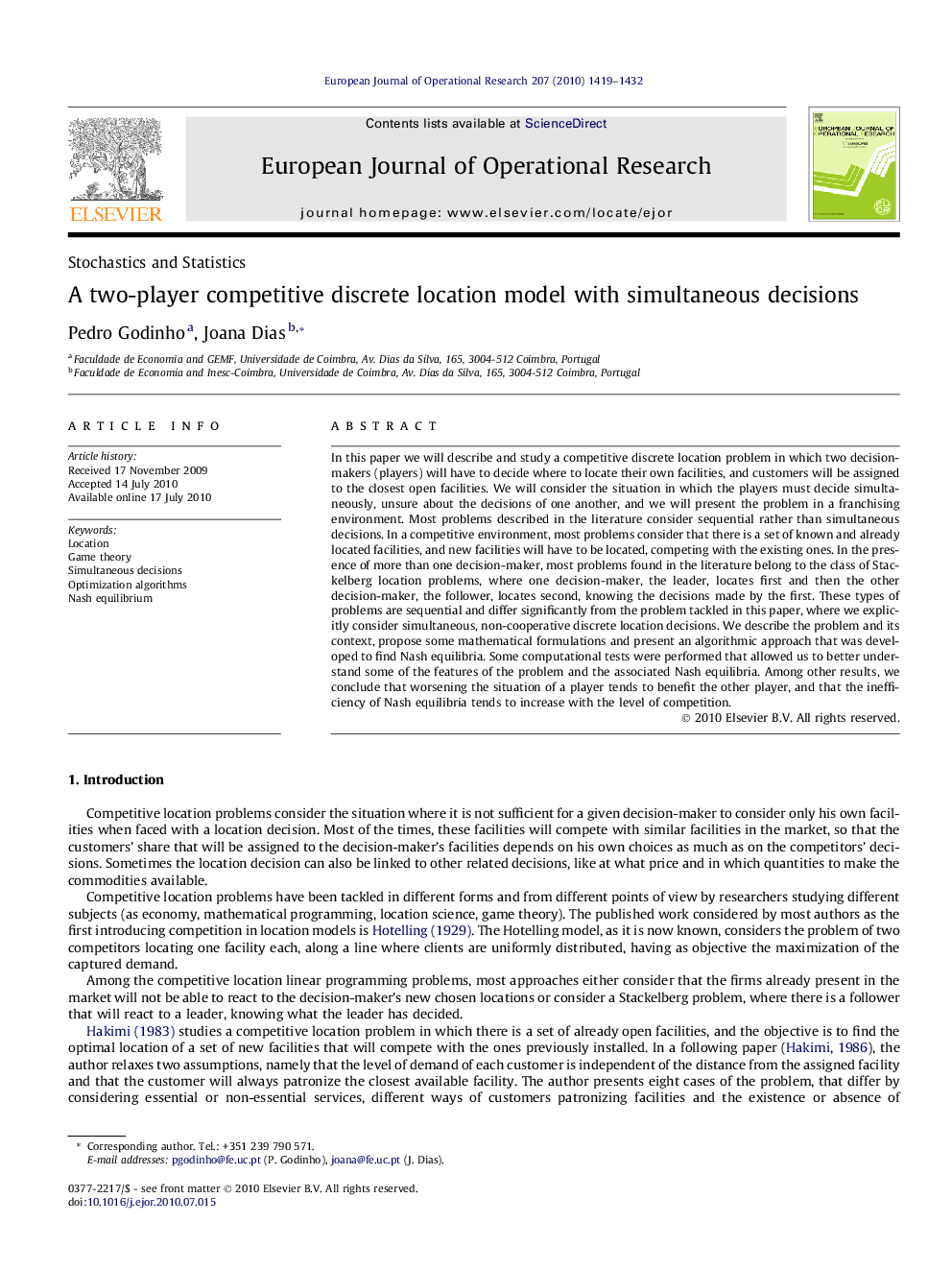| Article ID | Journal | Published Year | Pages | File Type |
|---|---|---|---|---|
| 6898767 | European Journal of Operational Research | 2010 | 14 Pages |
Abstract
In this paper we will describe and study a competitive discrete location problem in which two decision-makers (players) will have to decide where to locate their own facilities, and customers will be assigned to the closest open facilities. We will consider the situation in which the players must decide simultaneously, unsure about the decisions of one another, and we will present the problem in a franchising environment. Most problems described in the literature consider sequential rather than simultaneous decisions. In a competitive environment, most problems consider that there is a set of known and already located facilities, and new facilities will have to be located, competing with the existing ones. In the presence of more than one decision-maker, most problems found in the literature belong to the class of Stackelberg location problems, where one decision-maker, the leader, locates first and then the other decision-maker, the follower, locates second, knowing the decisions made by the first. These types of problems are sequential and differ significantly from the problem tackled in this paper, where we explicitly consider simultaneous, non-cooperative discrete location decisions. We describe the problem and its context, propose some mathematical formulations and present an algorithmic approach that was developed to find Nash equilibria. Some computational tests were performed that allowed us to better understand some of the features of the problem and the associated Nash equilibria. Among other results, we conclude that worsening the situation of a player tends to benefit the other player, and that the inefficiency of Nash equilibria tends to increase with the level of competition.
Related Topics
Physical Sciences and Engineering
Computer Science
Computer Science (General)
Authors
Pedro Godinho, Joana Dias,
